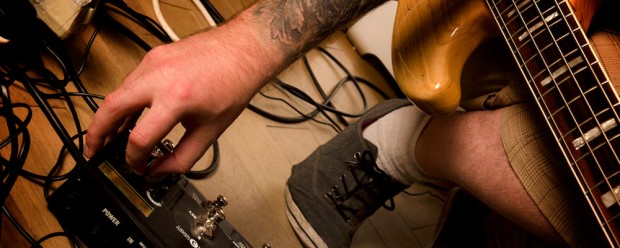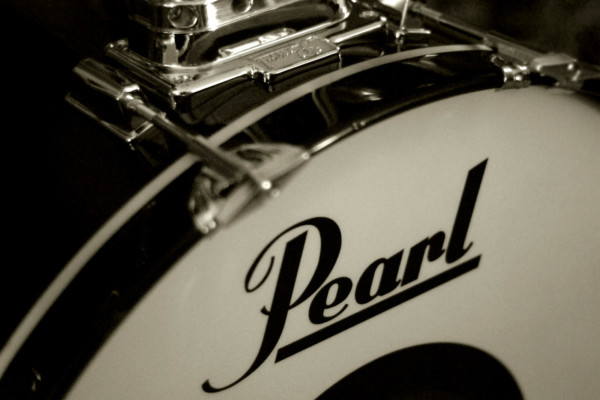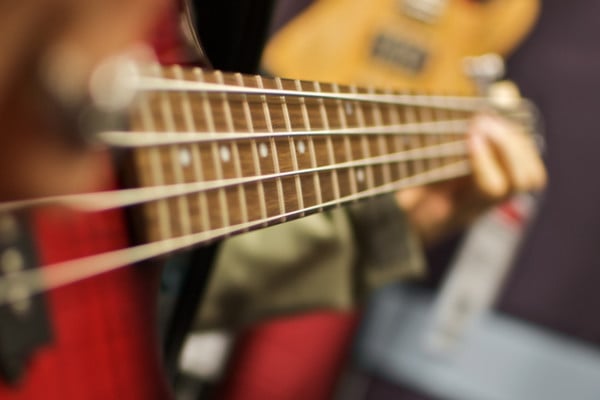Effects: Straight In or Through the Loop?

Q: Is it ok to plug my bass directly into my chain of effects pedals and out to my amp, or is it better to run the pedals through the effects loop, and plug my bass straight into my amp?
A: I seem to be on a roll with the topics I have limited experience with personally, and so I’m going to ask readers to share their thoughts as well.
I see either one or two clear advantages to using an effects loop depending on the configuration of your effects loop.
First, when you use the effects loop built into your amp, it is putting the effects AFTER the signal has run through the pre-amp, which can enhance the effected signal. I’ve been told that effects often sound much clearer when placed after the preamp as opposed to in between your instrument and the preamp.
I’ve also heard it said that running effects into an effects loop can help cure impedance mismatches caused by the use of different pedals. I’ll just have to take their word for it on this one.
Second, if your effects loop has a blend knob (you will often find this on high-end DI or stomp box effect loops), this also allows you to further sculpt the sound by blending an un-effected signal in with the effected signal. This can really help to keep things from getting too muddy, in my experience.
I would also imagine that if you are using a lot of effect pedals, an effects loop could help to minimize signal degradation and noise, although this is an assumption on my part.
I also like using switchable effect loops for certain sounds. For example, one can get a pretty nice synth-like tone by combining a good octave with a good envelope filter or auto-wah. This requires you to stomp on multiple pedals before getting your tone – unless you have the effects ready and running into a switchable effects loop. In that case, you’ll simply turn the entire signal chain on and off, which is quite handy. This also serves to retain the purity of your signal when running dry.
Although this doesn’t relate to effects loops, I would also encourage you to carefully consider the order in which you run your effects. For example, if you sometimes use an envelope or another effect that changes sound depending on velocity, you’ll want to run that ahead of any other pedal that changes your velocity – over-drive, octave, etc. – if there’s even the slightest chance that you will use both at the same time. I only use a few effects – if I use them at all – but when I do, I often run my limited effects in this order:
Envelope ? Octave ? Reverb or Delay
That’s pretty much the extent of my knowledge on this topic but I know readers have insight on this. Readers, what do you do with your signal chains? Please share in the comments.
Have a question for Damian Erskine? Send it to [email protected]. Check out Damian’s instructional books, Right Hand Drive and The Improviser’s Path.




I disagree on your last point. Envelope sounds better AFTER fuzz if you want that outer space funk sound
You’re right, for that sound but if you then went to use the envelope by itself, the levels would be off. Like I said, I don’t use effects very often but I have found that the only way to use my envelope in multiple effect scenarios without tweaking knobs on stage is to put it early in the chain.
You definitely want to use the loop, particularly with a nicer amp/preamp. A big part of the money (and sound) of the amp is in that preamp section. As Damien pointed out, matching the impedance of the pick ups is critical. Impedance is the resistive load that that is applied to the pickups (coils). Generally, the nicer the amp, the higher the input impedance to the pre Most pedals do not account for that.
Like I said, on good amps in particular, the money is in the preamp section. If you put pedals between your instrument and the preamp, you are throwing away the quality.
If you use a true bypass blend pedal like the one I described, you can go “direct” to amp, and have pedals in front of the amp. Works well!
The one I settled for was a X-blender pedal, and most likely there’s other similar ones.
I have NO connection to the manufacturer!! just found it while on a holiday.
“blend knob”
Can definitely recommend this like nothing else!
Got myself an Effect loop pedal with switchable parallel/seriel effect loop, and a blend knob that can be adjusted by foot (bit tricky but ok to adjust – large pot-knob).
Best of both worlds. Can go serial with a Superfuzz and go Beastie Boys Sabotage mad, and switch to parallel the next second to have a phaser in parallel without sucking out the bottom end, or blending in a second overdrive pedal to have a much fuller sound of “two” amps at the same time.
Most versatile piece of gear I have ever bought, and getting much more out of the other effect pedals, so even though it was slightly expensive, it’s been well worth it!
If your amp doesn’t have a loop blend, the Boss LS-2 does a great job of this. Put all your fx in one chain, leave the other empty, and then choose “mix a+ b” mode to blend the two. The actual footpedal will then switch your whole fx loop on or off.
D x
Thanks Damian – is it right that effects expect an instrument level signal, whereas effects loops are line level (built for rack effects rather than stompboxes)? Cheers!
I run my bass into distortion 1st and wah last in front of the amp. I then put all of my time delayed effects (chorus/ flanger/ delay/ trem/ reverb through the effects loop.
if you employed a stand-alone compressor/gate, you would also place that between the instrument and amp, correct?
Yes
Great stuff everybody. I knew you guys knew more than I on this one.!:)
Hi Damian! For me, I run my Zoom multi effect in the effects loop of the RMI Basswitch. Besides cutting down on noise, I have the advantage of pre-setting 6 or 7 different effects on the multi, and kicking them in when needed using the Basswitch. My Diamond compressor and MXR octave are in the serial loop, always at the ready. Pedals are fun and unnecessary- well, that is, until they are absolutely required. . .
I personally don’t really use any effects. Almost my entire pedalboard is comprised of toneshaping options. My chain ends with a Tech 21 SansAmp Bass Driver Deluxe DI. In this case, I run my bass directly into my pedalboard, and out of my SansAmp and directly into the Effects Return on my amp head. This completely bypasses the amps original preamp, and is the ideal way of running the SansAmp for optimum tonal quality.
Jonathan, Do you think this would be the way to go with the Sadowsky DI preamp? I play a passive jbass through a SWR Super Redhead. I was thinking about buying another Sadowsky because I sold my last one years back and had problems with it clipping the pre amp. Jbass>Sadowsky>SWR input. If you’re not sure I might just call Bass Northwest and see what they have to say. Great food for thought.
Hi Stephen
Straight into effect return – that’s what I often do. I do band practice different places where the amps have different tonal quality, or lack of it. The last of my pedals on the board is an EBS Valve Drive overdrive/pre. Sounds great and because of a Exotic X-blender effect loop pedal for the effects on my board, I can go straight to the valve pre, to get the feel of the passive Jazz I have in conjunction with the valve, feeling the sag.
Then I run it straight in the effect return. This solution is sounding great to me, and I*ve been complimented on soundwise several times by other bassists.
Benefits
1: Gives much more consistent sound from place to place.
2: Sound not degraded by a pre in the amp that doesn’t sound as god.
3: Signal running through less gear.
4: At smaller gigs the sound engineer will be your friend, when you just give him a great sounding DI signal straight to desk, as this is MUCH easier to control. You only need minimal eq to get close enough to “your” sound , to be able to play gigs through the monitor and/or PA = more gigs!!
5: You can go to gigs on the bus or bicycle with a bass on the back and pedal board in hand.
6: This no amp setup leave more money for better quality of gear, and you won”t break your back hauling a giant Ampeg valve/tube head and cab, even though they do sound good!
Last but not least:
Always just try what you prefer. Nothing will break, and you might find “the” new sound that everybody will want to have!
Honestly, you’ll just have to try it. I’ve ready that the Sadowsky doesn’t put out enough to properly drive the power amp. Also, depending on how the SWR Super Redhead is built, the preamp could be clipping in order to protect the speaker cabinet. I’ve had amps that do that for safety.
It may be helpful to check out the manual for the Sadowsky DI and your Redhead. Both of my manuals, for my SansAmp and my amp head, state that it’s best to run into my amp’s FX Return. The SansAmp has plenty of power for it, and can also be modded to add another 6db headroom.
I should also mention that I’m using an active jazz.
Like Poul said, just give it a try!
Hi,
I am using Radial Bassbone PreAmp, and connected to its loop link following pedals in the order of list
EBS MultiComp
DigiTech XBS Bass Squeeze Compressor
Boss GEB-7
Electro-Harmonics Big Muff Pi Distortion
Ibanez Sb7 Synth
does my order sound reasonable ?
I also bought recently, Hartke VXL Bass Attack Pre-Amp specially for Tool sound, but now i am thinking, should I add it to loop, or connect it as serial to Bassbone ?
My ideal setup would be a good amp head(> 350w), mxr preamp(m80) in series, my zoom b3 in parallel for delay, reverb, chorus etc. Works decently.
I run a GR55 and a bass PODxt (I note there’s an FBV controller in the pic). The issues with signal chain degradation don’t apply, but the bass POD does like it’s signal kept as constant as possible: this means it’s better to put it on the loop and utilise the amp compressor to help keep levels straight. The GR55 goes into the amp (I use it for modelled tones a lot). The signal chain capabilities internal to the GR55 and the PODxt mean there’s a huge amount of tweaks possible, but the signal chain is very simple.
I had acquired a lot of effects pedals, and so I assembled them on a nice pedal board. I was having a lot of trouble with noise. I was also having a problem sending a hot enough signal to make my octave pedal track well. One night, at the end of a gig, I had been having so many disappointments I was on the verge of giving up. It was becoming a distraction. Then it hit me that I had never tried the effects loop on my amp! So before I packed up and went home, I ran some cables and connected it to the send and return on the back of the amp. I couldn’t believe it. My pedals were dead quiet. And there was something about the signal coming from the effects loop output that made everything on my pedal board work as I had hoped they would. Not only did my octave pedal track way better, it also could produce much clearer and also lower notes. I felt a bit dumb for not thinking of doing it sooner, but was so glad that I finally thought to try it. I have been playing bass for so long and the old amps never had an effects loop, so we just plugged into the front input jack. But then I never had more than one or two pedals in the signal path back then. If you haven’t tried it, you’ve got my story now. I’m never going back to the old way.
Here’s what I meant by whether your effects loop expects line level (rack effects) or can also handle instrument level (stomp boxes): http://www.ovnilab.com/articles/fxloop.shtml . So it may be the case that your amp’s effect loop is not ideal for stomp boxes, best to check the specs.
I’ve always read a lot about effects loops and true bypass pedals … and I disagree that it’s always the way to go !
My pedalboard include almost everything the forums tell not to do: 14 pedals, only 2 with a true bypass, a lot of buffered-bypass Boss pedals, including vintage Boss with ACA power mixed with regular PSA powered, everything in serie, powered by a single One Spot with power supply daisy-chains, and even an old Big Muff powered with a 9 v battery clip. An of course, bass straight into board into amp.
It works like a charm, doesn’t buzz or rattle, never died on me in the middle of a show, and it has the bonus value of impressing every guitarist I ever met (that last point being the most enjoyable).
I run bass only into the amp input, sculpt my tone using the amps preamp, the run out of preamp out and plug my MXR-M80 straight into the power amplifier. This way I can do clean direct out of the head to the PA and have distortion coming from my cab. To put distortion on PA I prefer using a Mic but I can also go direct from the pedals di.
I think it depends on your amp. If you rely on your amp for “your sound” then I’d use chorus, distortion etc pre amp and delay/reverb type effects in the loop. In my case I rely on my amp to faithfully reproduce the sound of my bass and not color the sound at all, so I tend to treat my amp like a PA and shape the sound entirely before it gets to the amp. so I use a Line 6 pod x3 for effects (sometimes two channels at the same time) and no amp model or a specific model if I’m going for that particular sound. My head and cab are there just to reproduce the sound for stage monitoring and the signal I send to the house is from the Line 6
Great approach Trey, keeps the sound in an easy-to-mix-for-the-PA form: I’ve been considering swapping out the amp head I have for a crossover and a couple of power amps and using only the Bass POD (I have an xt) and the GR55 for sound shaping.
I try to send the PA a finished product so they can run it flat and just adjust the volume. Sometimes I have to wrestle with the old school sound guys who want to mic my cab…but that leaves the horn out usually and they get a thuddy sound. But I also play keyboard bass and have a pretty complicated monitor setup, with in ear monitors, a condenser mic near the drummer, feed from the house minus bass, one channel of bass and one channel of keys
I have an active Peavy TL-5 directly into my Ashdown MAG 210T, then running a Zoom B3 through the effects loop on the amp. I find I have good control of tone running through the preamp first, although I do have limited experience, and I have been complimented on the simplicity and sound of this setup by people with a lot more experience than I have.
Where you put your effects really depends on what kind of effects they are, and it has to do with the impedance issue mentioned above. While I am an electrical engineer, I will try to keep this at a high level. To summarize, there are different electrical environments, including instrument-level and line-level. (The differences have to do with the impedances and voltages typical in each environment.) Stomp boxes are generally designed to work at instrument-level; that is, to have an instrument plugged into their input and an amp (or another stomp box input) connected to their output. Rack-mounted effects, in contrast, are generally designed to work in line-level situations, and the effects loop of amps are usually designed to be line-level; rack-mounts usually do not work well with an instrument plugged directly into them unless they have an input (usually labeled “INSTRUMENT”, sometimes with a switch to set the correct impedance). Because of this, equipment designed to work in one environment usually won’t work well in the other, though they can if you’re knowledgeable and careful; and care is required because you can do damage here. Notice I said “usually” and “generally” a few times; there are exceptions, usually because the manufacturer has specifically designed the effects processor to handle the exception (such as the example I mentioned). I recommend doing some more homework on this and educating yourselves. Here is a good article to get you started:
http://www.ovnilab.com/articles/fxloop.shtml
I ran my pedalboard through the EFX loop in my amp and, to my surprise it did not sound as good as going straight into the instrument input. Really can’t tell you why but, there was defintae difference.
A lot may depend on the head. I found with my MarkBass head, the effects simply sound better going directly into the input. When using the effects loops, there seems to be a loss of tone and the initial signal is compromised. Don’t know why…but it is. The simplest thing to do is try both and go with what you like better.